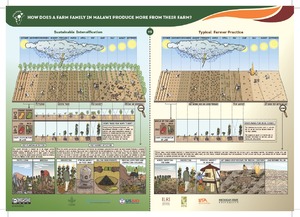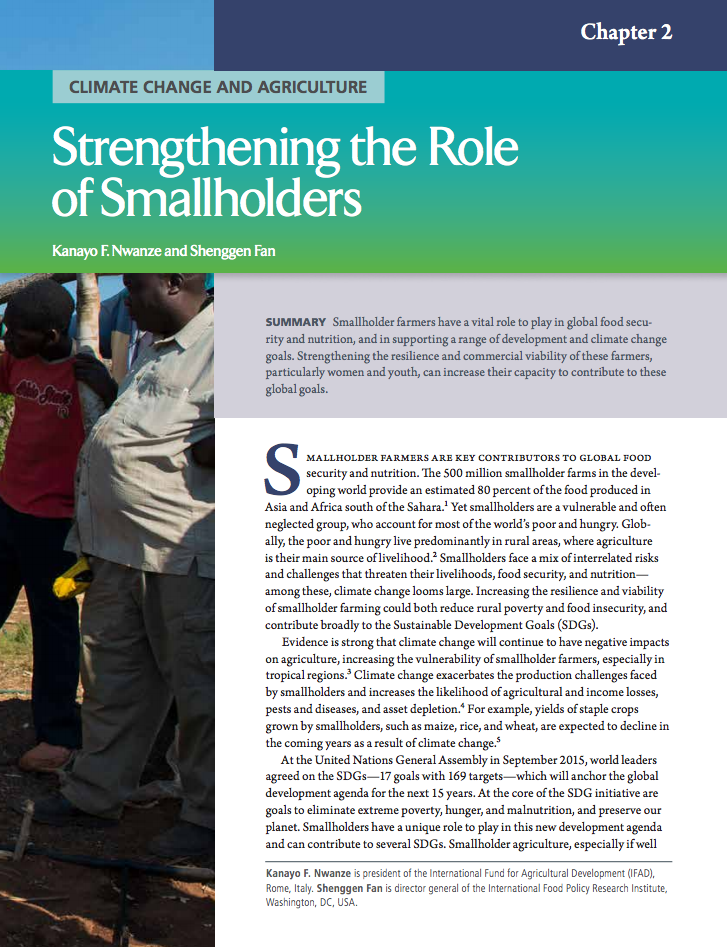How does a farm family in Malawi produce more from their farm
Law No. 1289 “On dehkan farm”.
This Law sets forth the legal basis for the establishment and activities of dekhkan farm and is aimed at creating favorable conditions for the development of this economic activity. Dehkan farm shall be subject of entrepreneurship performing production, storage, processing and trade of agricultural commodities; the aforesaid activities are based on the personal labor of one person or joint activity of a group of individuals on a land plot and property belonging thereto.
Ley Orgánica de Tierras Rurales y Territorios Ancestrales.
La presente Ley Orgánica de Tierras Rurales y Territorios Ancestrales, tiene por objeto normar el uso y acceso a la propiedad de la tierra rural, el derecho a la propiedad de la misma que deberá cumplir la función social y la función ambiental. Regula la posesión, la propiedad, la administración y redistribución de la tierra rural como factor de producción para garantizar la soberanía alimentaria, mejorar la productividad, propiciar un ambiente sustentable y equilibrado, y otorgar seguridad jurídica a los titulares de derechos.
A Portfolio Review of World Bank Rice Projects
Rice is the world’s most heavily
consumed staple crop. Its production requires enormous
volumes of water and emits large quantities of atmospheric
methane, a greenhouse gas some many times more powerful than
carbon dioxide - particularly during a medium term period of
about seven years. In a global context of growing
population, increasingly scarce water resources, and climate
change, more productive, sustainable, and efficient rice
Strengthening Agricultural Extension and Advisory Systems
The purpose of this paper is to provide
information on how to transform and strengthen pluralistic
agricultural extension and advisory systems in moving toward
the broader goal of increasing farm income and improving
rural livelihoods. The focus of this book is primarily on
the technical knowledge, management skills, and information
services that small-scale farm households will need to
improve their livelihoods in the rapidly changing global
Women's Rights in the Cocoa Sector: Examples of emerging good practice
Women cocoa farmers are central to the sustainability of the cocoa supply chain and cocoa-growing communities. Too often unrecognized and undervalued, women’s labor makes significant contributions to the amount of cocoa produced, which is under increasing demand.
Climate change and agriculture: Strengthening the role of smallholders
Smallholder farmers have a vital role to play in global food security and nutrition, and in supporting a range of development and climate change goals. Strengthening the resilience and commercial viability of these farmers, particularly women and youth, can increase their capacity to contribute to these global goals.
Evidence for upscaling of dry season irrigation technologies in Ghana: Market opportunities
Kazakhstan Agricultural Sector Risk Assessment
Agriculture is among the most risk-prone
sectors in the economies of Central Asia. Production shocks
from weather, pests and diseases and adverse movements in
agricultural product and input prices not only impact
farmers and agri-business firms, but can also strain
government finances. Some of these risks are small and
localized and can be managed by producers. Others are the
result of more severe, exogenous shocks outside agriculture
Tajikistan Agricultural Sector Risk Assessment
Agriculture is among the most risk-prone
sectors in the economies of Central Asia. Production shocks
from weather, pests and diseases and adverse movements in
agricultural product and input prices not only impact
farmers and agri-business firms, but can also strain
government finances. Some of these risks are small and
localized and can be managed by producers. Others are the
result of more severe, exogenous shocks outside agriculture
Kyrgyz Republic Agricultural Sector Risk Assessment
Agriculture is among the most risk-prone
sectors in the economies of Central Asia. Production shocks
from weather, pests and diseases and adverse movements in
agricultural product and input prices not only impact
farmers and agri-business firms, but can also strain
government finances. Some of these risks are small and
localized and can be managed by producers. Others are the
result of more severe, exogenous shocks outside agriculture







